Apple iPhone XR review: R stands for reasonable
The iPhone XR offers a majority of the XS' bells and whistles without asking an exorbitant sum of money.

When the iPhone X was unveiled last year, the world of consumer technology went berserk. Some were dumbstruck with an almost edge-to-edge fullscreen design while Apple loyalists were fanboying over the new UI navigation. However, the exorbitant price meant it was seen restricted only to the affluent. Since then, people had been looking forward to the leaks that described a new 6.1-inch LCD iPhone offering most of the bells and whistles of the iPhone X without burning a hole in the pocket. And as expected, Apple's CEO Tim Cook took the wraps off the brand new iPhone XR — the iPhone that fans have been waiting for patiently.
The iPhone XR was conceptualised to offer most of the headlining features of the iPhone XS to a larger consumer base that wasn’t willing to shell out more than a lakh of Rupees. On paper, it retains the same highly anticipated design, the advanced biometrics and the brains and eyes from that of the XS. The compromises are made in the display and camera departments, out of which the former has drawn a lot of criticism. Despite that, Apple is selling the XR in five colour variants, with the minimum asking price being Rs 76,900 for the 64GB variant. You can spend Rs 81,900 and bump up the storage to 128GB or go up to 256GB by shelling Rs 91,900.
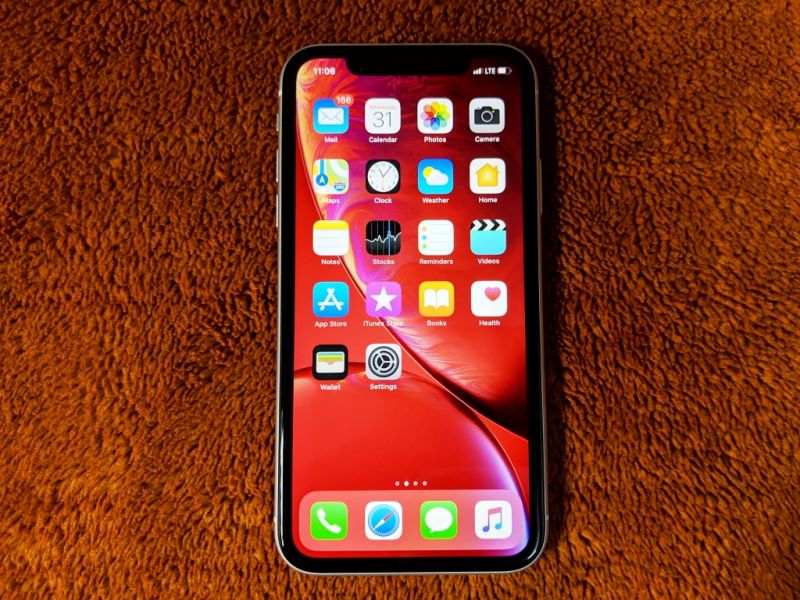
With the prices still undercutting the XS by a huge margin, is the iPhone XR the flagship-class smartphone that we have been looking forward to coming out of the Cupertino giant’s factories in recent history? Let dig deeper.
Build, Design
Unlike some of its rivals (Ahem — Google), Apple takes hardware very seriously and has set a record for delivering breathtaking devices in the last decade. Last year’s iPhone 8 and iPhone X lineup brought back the more glamorous glass-metal sandwich build to the iPhone after a long while (the iPhone 4S set the trend). The XS and XS Max set the pinnacle for smartphone building this year with a meticulous attention to detail and a choice of materials that will maintain the luxurious feel over years to come. The XR too follows the same footsteps, but cuts corners from a few areas to keep the prices "affordable".
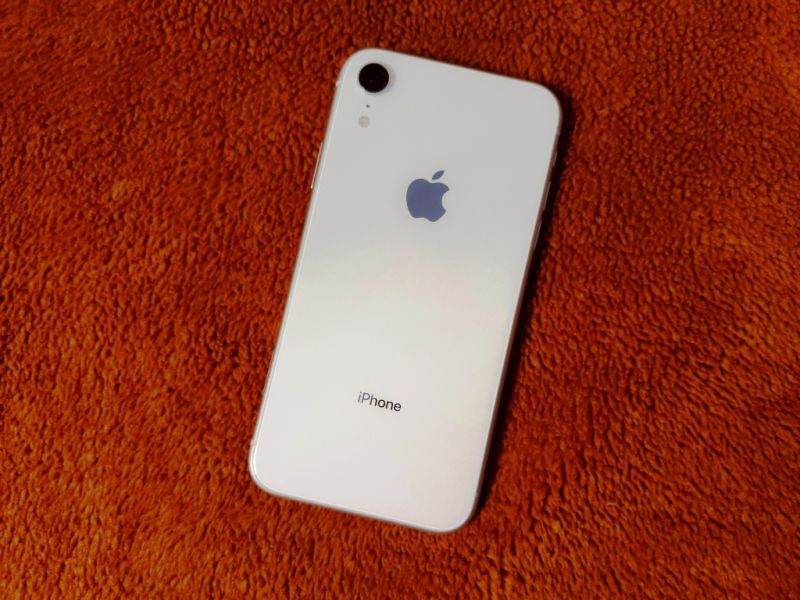
But this is Apple — they don’t come cheap! So, the design geniuses at Cupertino cleverly borrowed what was considered premium in the older models of the yesteryear and infused it into the iPhone XR. The result is surprisingly impressive — the XR goes for a 7000-series Aluminium frame instead of the stainless steel seen on the X or the XS. This makes the XR retain the matte finish charms of the iPhone 8 and 7 series models. However, the smooth texture also makes the XR slippery and it’s advised that you dress up your XR with a case as soon as you take it out of the box.
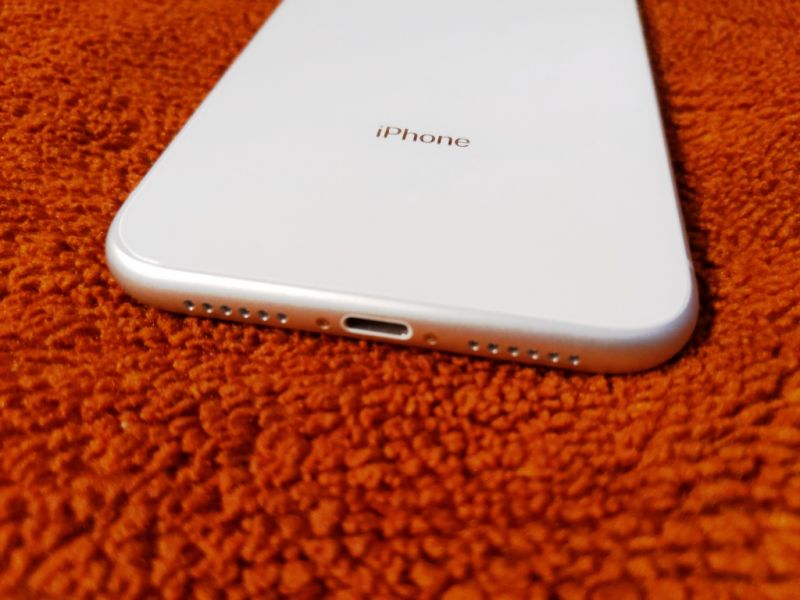
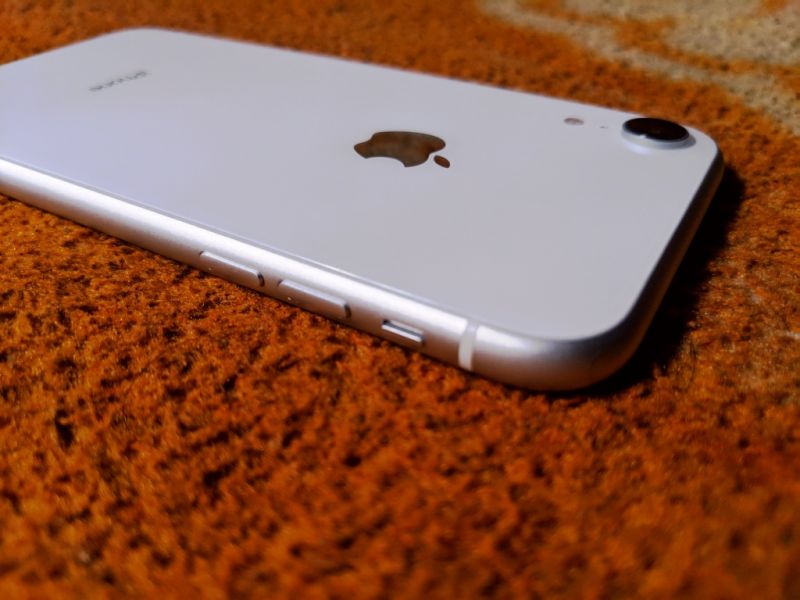
Everywhere else, the design is pretty close to what we saw on the iPhone X last year — an all-glass rear with a camera bump and a notched-display to the front. Apple says the glass is one of the most durable ones in the market and will sustain itself well against scratches. However, our unit was picking up minor scuffs when exposed to daily usage scenarios, so it’s advisable to go for a tempered glass protection in order to save yourself from massive repair bills. You still get the volume rockers, the slider switch for profiles and the sleep button in the traditional iPhone positioning. There's a visible single SIM tray, but the XR features Dual SIM connectivity — thanks to the provision of an eSIM. The eSIM will presently work with Airtel and Jio for Indian consumers, and will allow users to switch between two networks for either making a call or using the Internet. Since eSIM hasn't gathered much traction in India, we wished that Apple had offered the Chinese variant which has two physical SIM card slots. We also wished that Apple had pushed for an IP68 certification instead of the IP67 certification here to make it absolutely weatherproof like the XS and XS Max. Nonetheless, the iPhone XR will cope well with light showers and accidental spills.
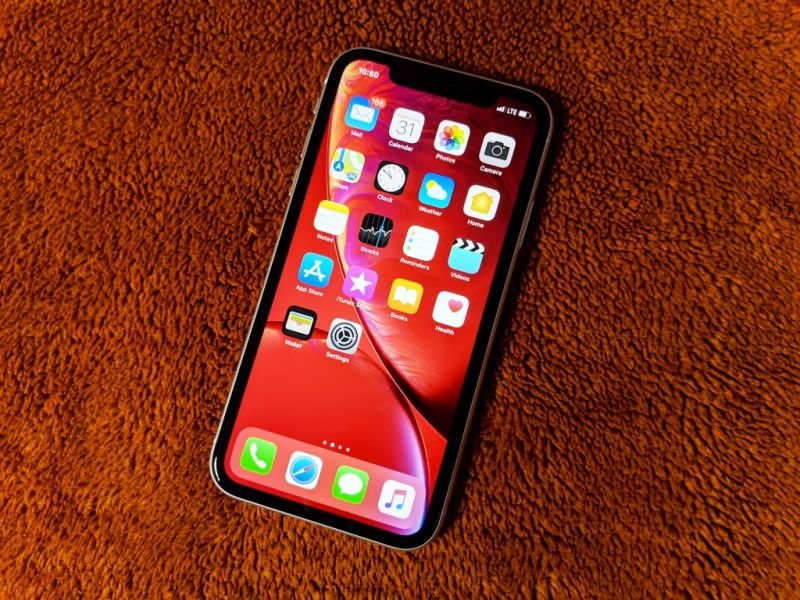
Eager eyes will notice the slightly thicker bezels on the XR when compared to the X, XS or XS Max — that’s due to the Liquid Retina display (LCD) that Apple chose over the usual OLED panels. The display’s natural properties make the bezels a tad thicker, the reason for which we discuss next.
Display
While in development, the XR was known to the world as the 6.1-inch LCD iPhone. And without surprises, Apple proudly flaunted its own take on a narrow-bezel LCD panel, which it loves to call Liquid Retina. Measuring 6.1-inches diagonally, it renders images at a resolution of 828 x 1792 pixels with a pixel density of 328ppi. Now, people have been bashing Apple for stuffing a low-resolution panel in the XR, with some comparing it with iPhone 4S’ unit. It also hits your conscience, especially when you consider that rivals are offering full HD+ displays as standard in this segment.
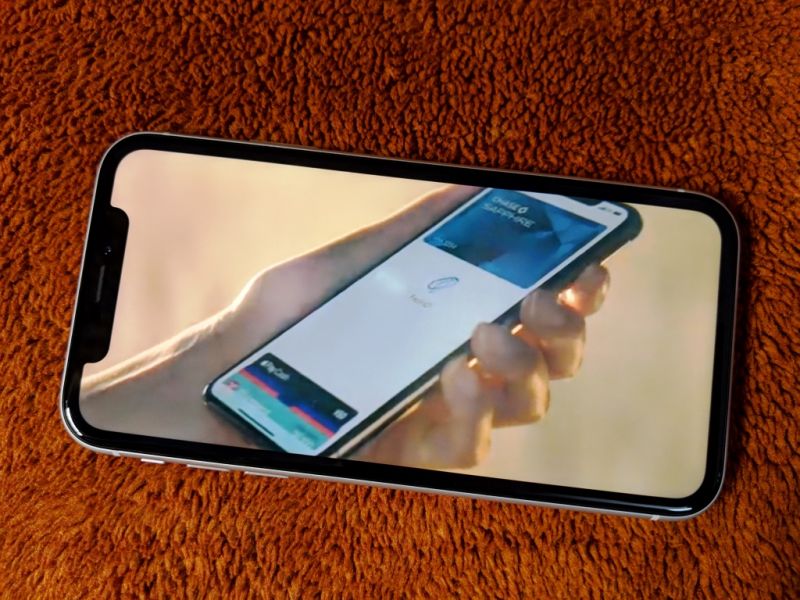
Boot up the XR and there’s no way you will see pixels peeping at you. In fact, the display seems to be as good as it has been on previous LCD iPhones. The colours are vibrant (thanks to the wide colour gamut) while contrasts are maintained up to natural levels. Apple’s TrueTone colour adjustment works well under different ambient lighting, managing the white balance to keep the colour tines closer to natural ones.
Being an LCD means you get oodles of brightness, even under direct sunlight. Apple also confirms that they have increased the number of LEDs for the backlight — which means a brighter display with an increased nits output.
However, a slight shift in colours is noticeable once you tilt the device at smaller angles — the display loses colour accuracy while viewing off-axis. Nonetheless, while binge-watching on YouTube or swiping through the photo gallery, the display provides for enjoyable viewing experiences. The notch does eat up into the viewing area and there’s no way to scale apps (especially games) to avoid the notch — maybe Apple could do something in the future.

Now, several of you must be wondering how Apple managed to kick off the chin and prevent backlight bleed on an edge-to-edge LCD display. Apple doesn’t do shortcuts and therefore, went up to greater extents to make sure the viewing experience is close to what users get on the XS and XS Max. The XR’s LCD gets pixel masking and sub-pixel anti-aliasing, which masks the light bleed and enables the panel to follow the curves around the edges.
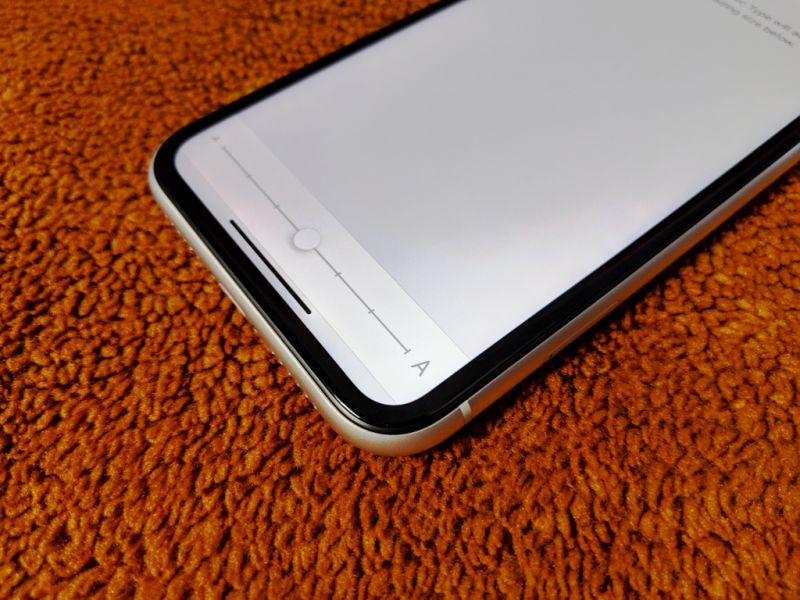
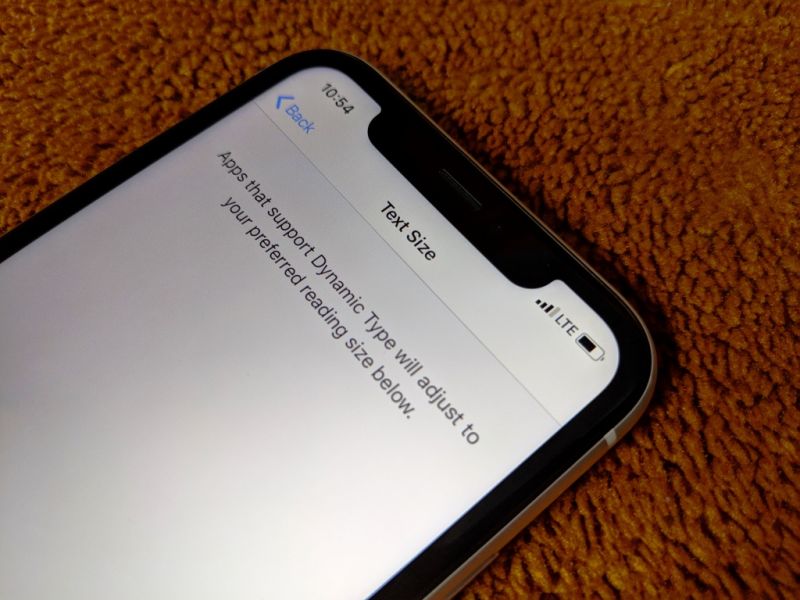
A new backlight design cleverly stuffed under the visible narrow bezels makes sure you only see what you intend to, not a halo effect peeping from the edges. All of this makes for a uniform bezel all-around, with only the notch being an exception. And after all, these panels come colour-corrected from the factory — which means that they are not conventional LCD displays slapped on your phone, but are a highly tuned to get the best and next-to-original images.
Performance
Each year, iPhones are known to be built around chips that are a whole generation faster than the ones seen released from the Qualcomm or Samsung factories, or anyone else from the Android universe. Nothing’s changed for the XR this year as well. Apple has stuffed in the same 7nm A12 Bionic chip that drives the XS series. The A12 Bionic SoC holds a hexa-core CPU paired with a quad-core GPU and an octa-core Neural Processing Unit. This is paired with 3GB of RAM, which is a GB lesser than the XS. Count in Apple’s proprietary iOS 12 and the package is complete.
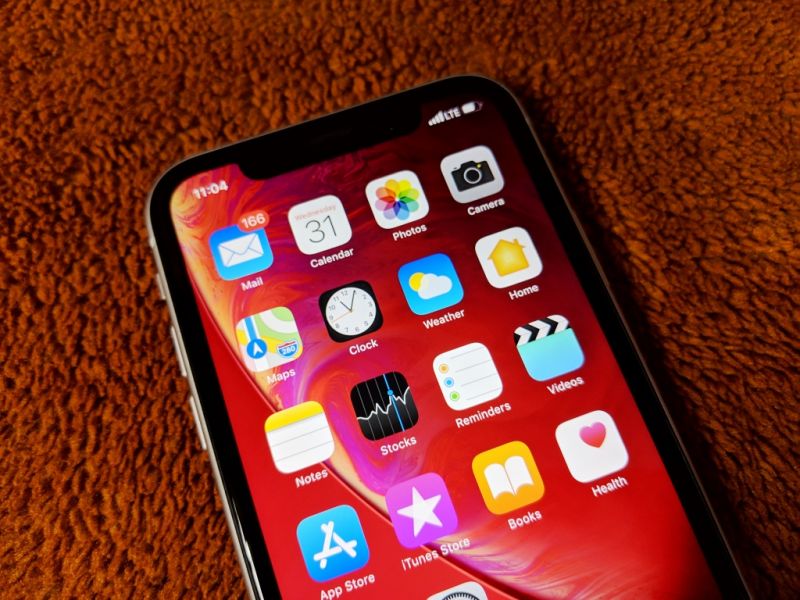
The iPhone XR is fast out-of-the-box — ridiculously fast and capable. The optimised iOS 12 makes sure that all the power available at hand is utilised in the most efficient of ways so as to maintain Apple’s standard of smooth smartphone user experience. Apps and games open way before than they do on Android counterparts — the fruits of immense hardware-software optimisation. Memory management is very impressive, with XR easily holding multiple apps in the memory for users to swipe between them at any moment. However, with a limited 3GB of RAM, the XR doesn't hold as many apps as its elder siblings. The animations are smooth as silk, with no noticeable lags or stutters anywhere throughout the UI. iOS’ gesture navigation is the benchmark, making every swipe feel as natural and fluid as it should seem. No wonder, the XR easily scored an average of around 363,500 on AnTuTu, outperforming every other smartphone out there.
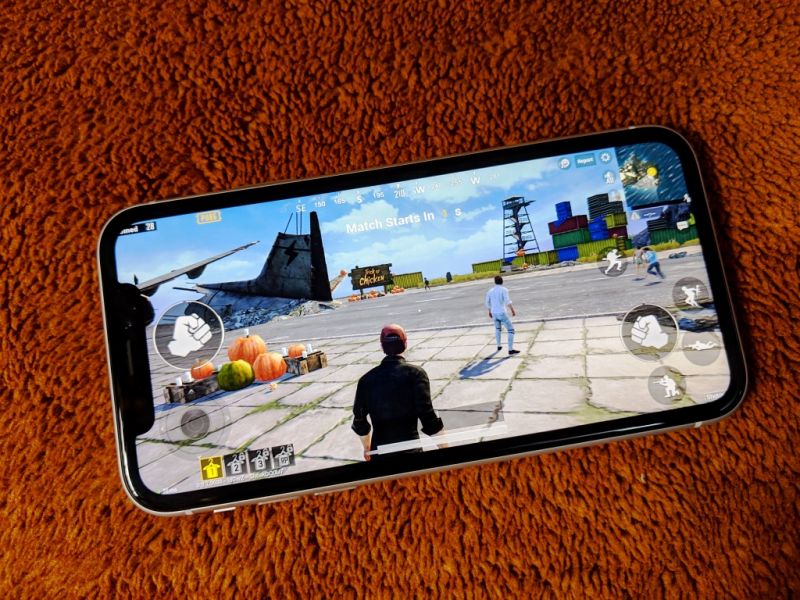
iOS 12 as a smartphone operating system is extremely smooth and sensible. It may not be as versatile as Android, but it makes sure all the smartphone chores are dealt the way they are intended to. Since the XR follows the iPhone X-class of aesthetics, the Control Centre is now accessible from the top right corner while Notifications are accessible from the centre or the top left corner of the display. And on the topic of notifications, iOS 12's revamped notification management system now makes it easy to deal with notifications from the lock screen. Grouped notifications are now a blessing and long-pressing on them throws up more options to customise the way you are notified on such information. The widget window now includes more interactive widgets for most apps and we found it a useful place to catch up with what's happening with the phone and its apps with a quick glance.
iOS 12 brings in Screen Time, which helps you track your smartphone usage and if needed, tone down your usage with the help of several tools. One can use Downtime to make only those apps available that are absolutely needed at specific times of the day, or use App Limits to set time limits for individual apps. Google’s Digital Wellbeing on Android 9 Pie does give you more options to maintain your digital health, but Screen Time isn’t far behind and could do with more finessing on Apple’s part to make it more usable.
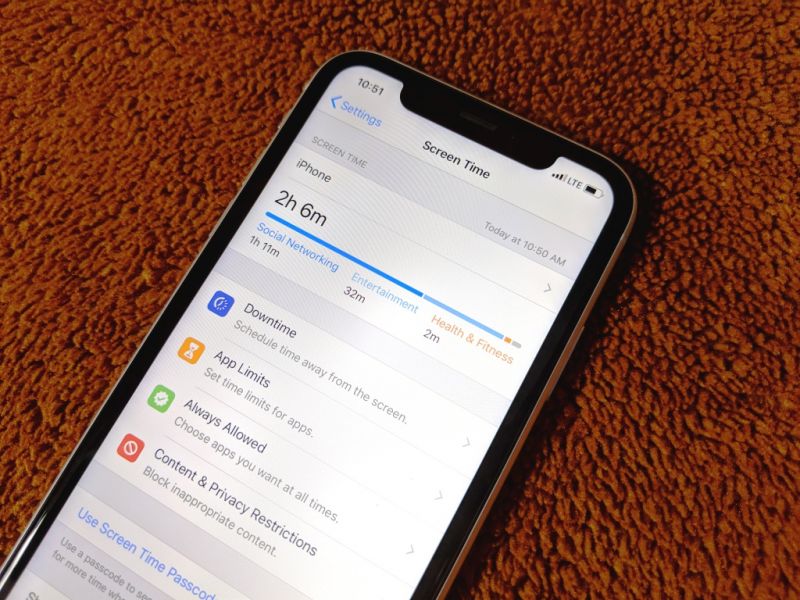
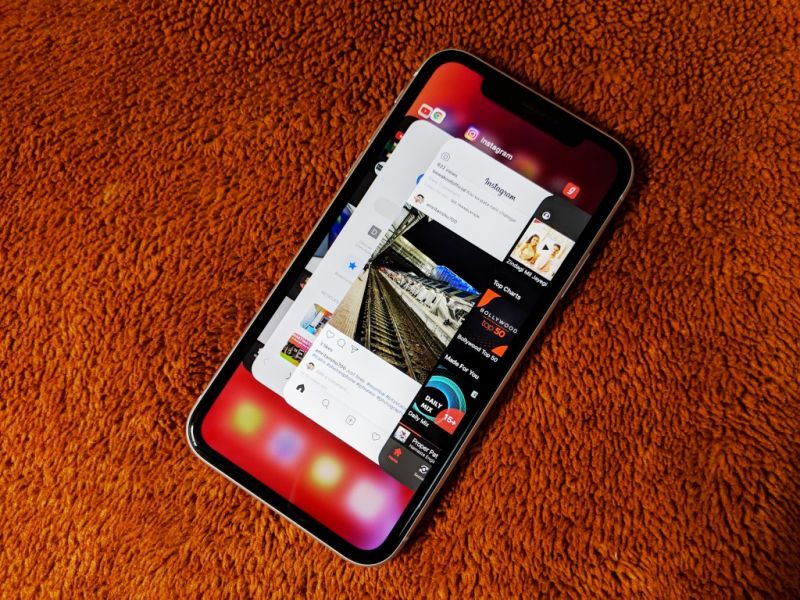


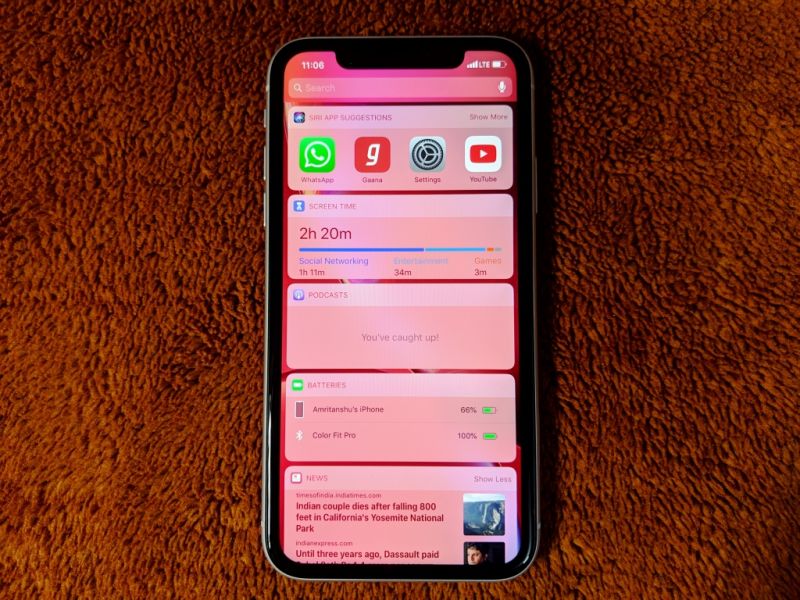
Sadly, due to the lack of 3D Touch on the XR, iOS 12 turns to haptic feedback, which is essentially iOS’ style of doing the ‘long-press-for-options’ feature. App shortcuts are gone for now and moving the cursor between texts requires you to long-press the spacebar for adjusting the cursor.
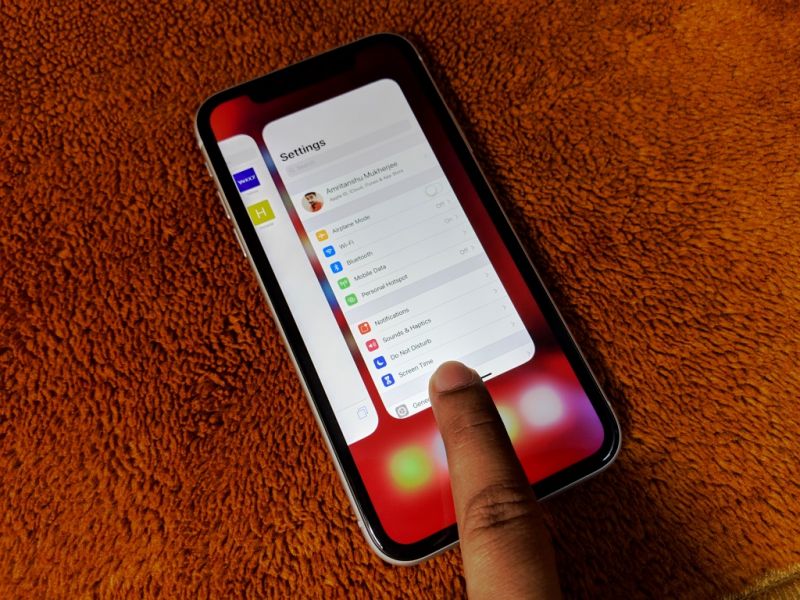
However, what works as intended, if not better, is the FaceID biometrics system. Apple finally got rid of TouchID on the current year’s lineup and is relying completely on its TrueDepth camera system using FaceID. For those who don’t remember, the TrueDepth system comprises of a dot projector building up a 3D face map with invisible IR light dots, which is illuminated by an IR Flood Illuminator and is captured by an IR-sensitive camera.
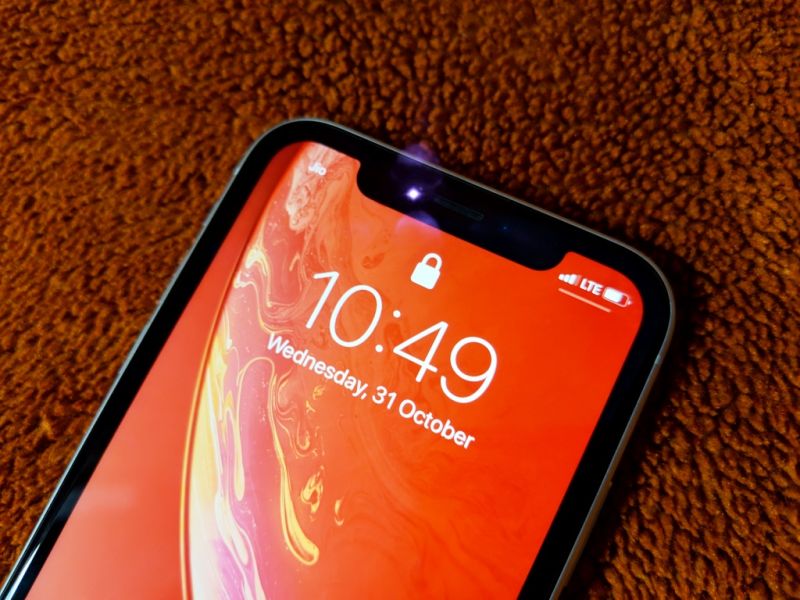
FaceID works like a charm in most lighting situations, even when it goes pitch dark. The accuracy is remarkable, with the system never giving up to a glimpse of your face. You can verify your online payments with supported services using FaceID as well. The downside to FaceID is that you need to be facing your phone to unlock it, which is less convenient that TouchID’s ‘anywhere unlocking’ capabilities. However, once you get used to it, FaceID is more effortless than any other biometric verification and you will almost get used to it.
Camera
With this year’s iPhone lineup, Apple has followed Google’s suit and has adopted the idea of computational photography. The XS series gets a dual lens system, but the XR has to make do with a single rear setup, keeping cost in mind. Despite that, the XR gets the XS’ impressive primary unit — a 12MP sensor with an aperture of f/1.8 — a 1/2.55-inch sensor with 1.4µm pixels and is assisted by OIS as well as PDAF. The 7MP front camera is assisted by the TrueDepth system for dealing with selfies and unique 3D imaging effects.
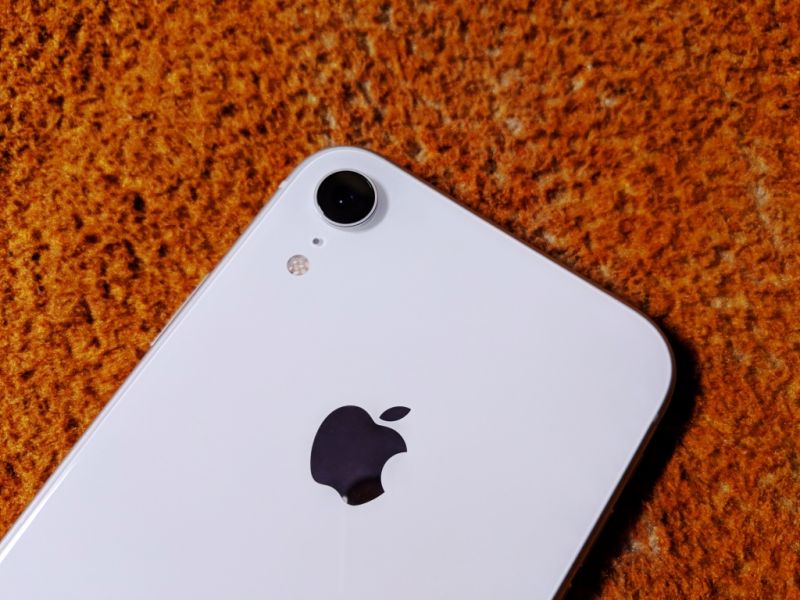
Let’s start with the rear camera — it is awesome! Period! The XR maintains Apple’s style of imaging with slightly warmer colour tones. However, the single sensor captures tremendous amounts of details and the new computational photography ensures the dynamic range is pretty close to what you see in reality. Under daylight, the XR doesn’t even break a sweat. Photos look really good — almost as good as they look on the iPhone XS. The dynamic range, as well as the brightness levels, are rendered accurately — no complaints here. The Smart HDR mode maintains a good balance of exposure in most shots. Low light does put some strain on the camera with regards to exposure, but noise was usually invisible. Night time photography is handled decently, with the camera doing its algorithmic magic to keep noise at bay while maintaining sharpness. This results in some shots looking dull when compared to results from some of its established rivals, but it's assured that you will get quality images most of the time, which can easily be edited as per your whims. The exposure from light bulbs, floodlights and the likes are handled impressively too. The lack of a telephoto lens, however, affects the sharpness when you are zooming in on a subject.



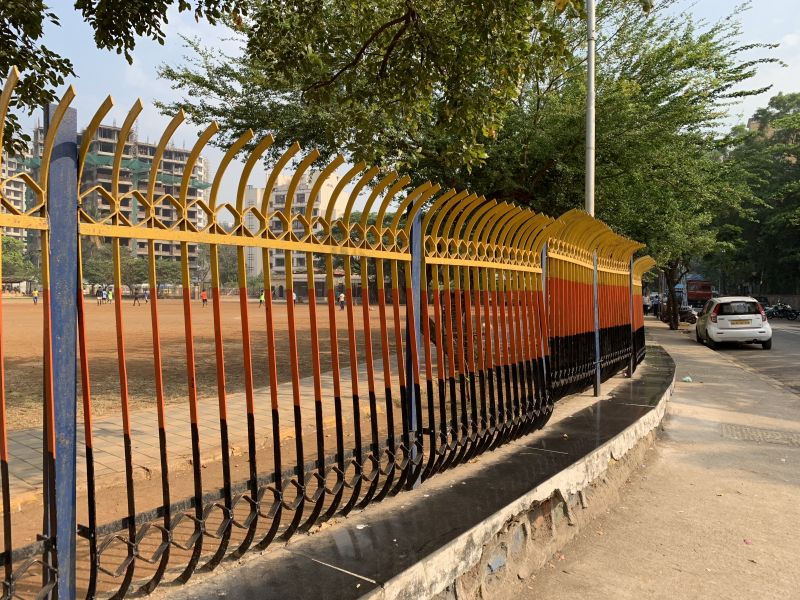
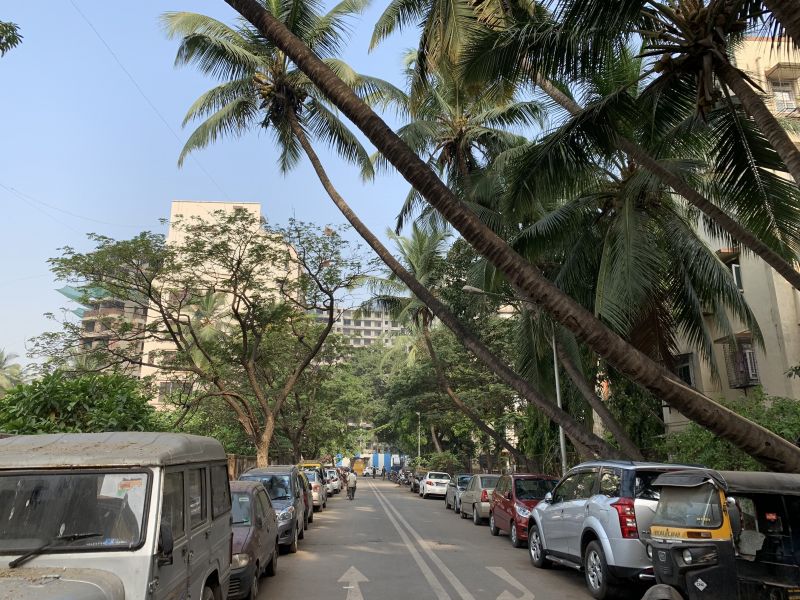
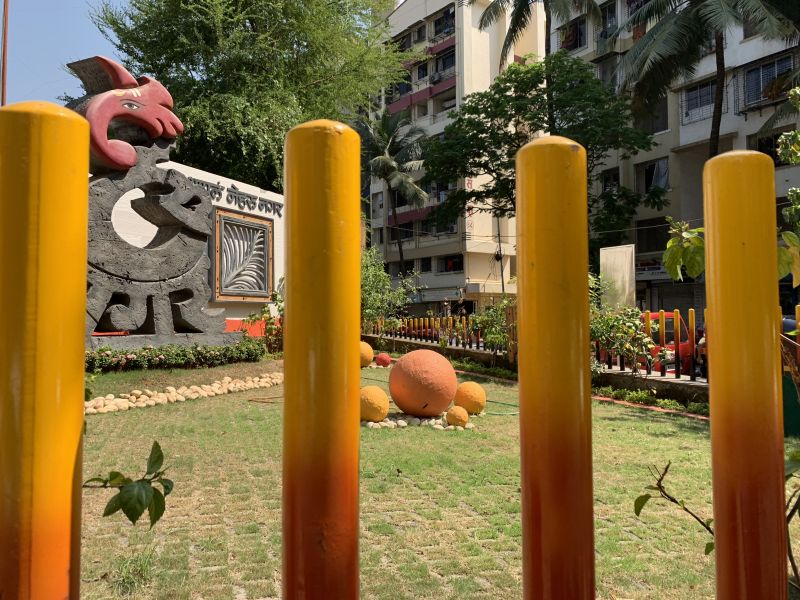
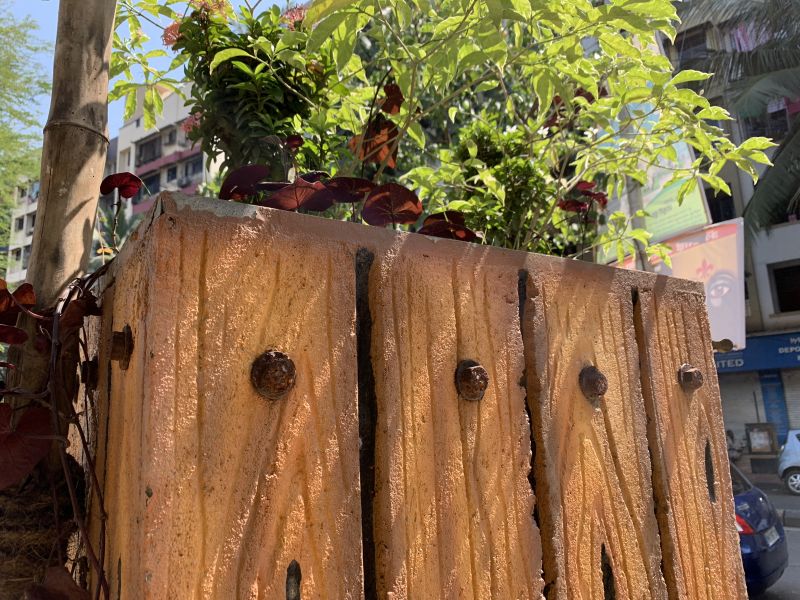

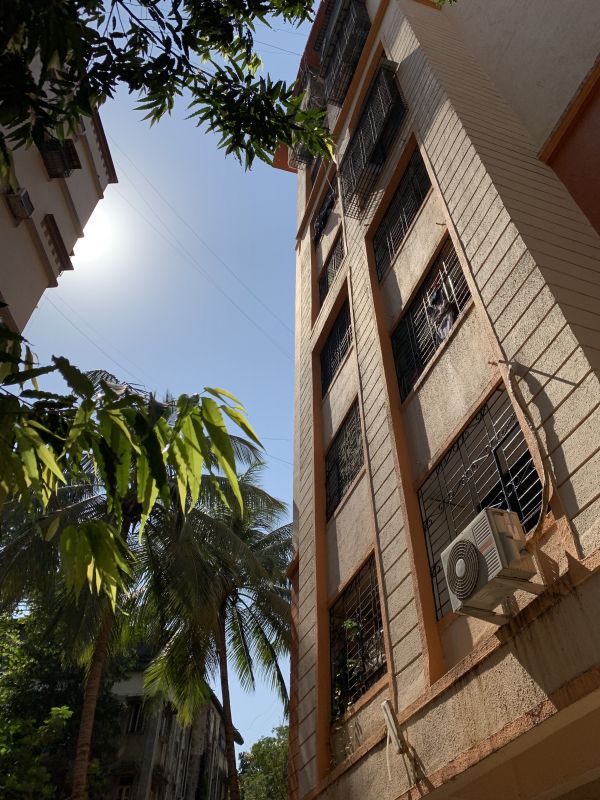
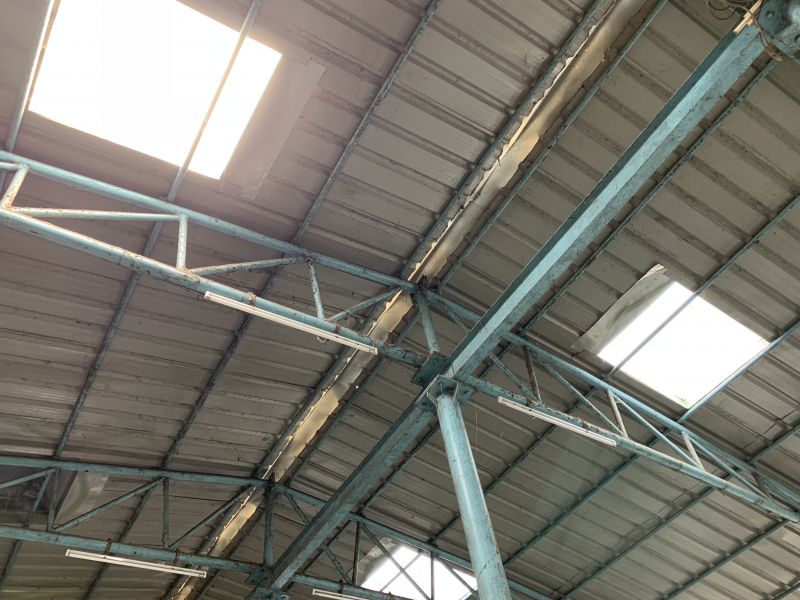
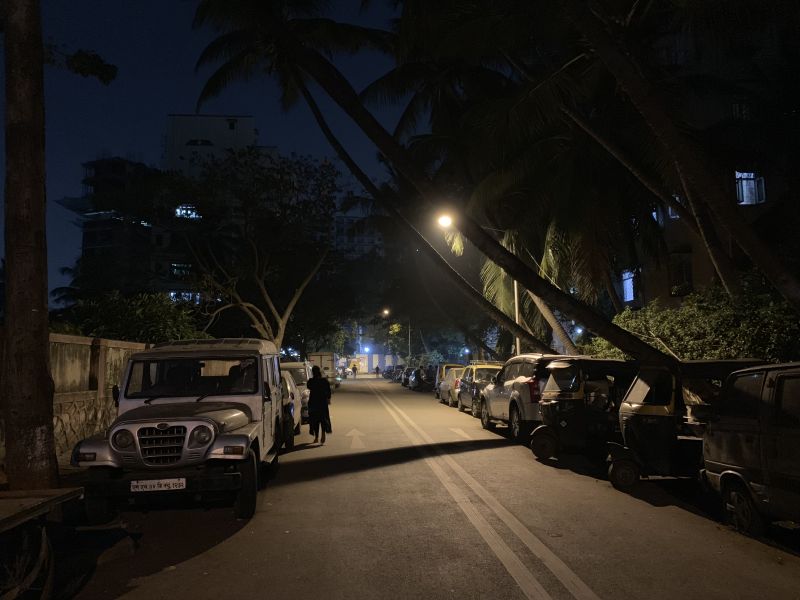



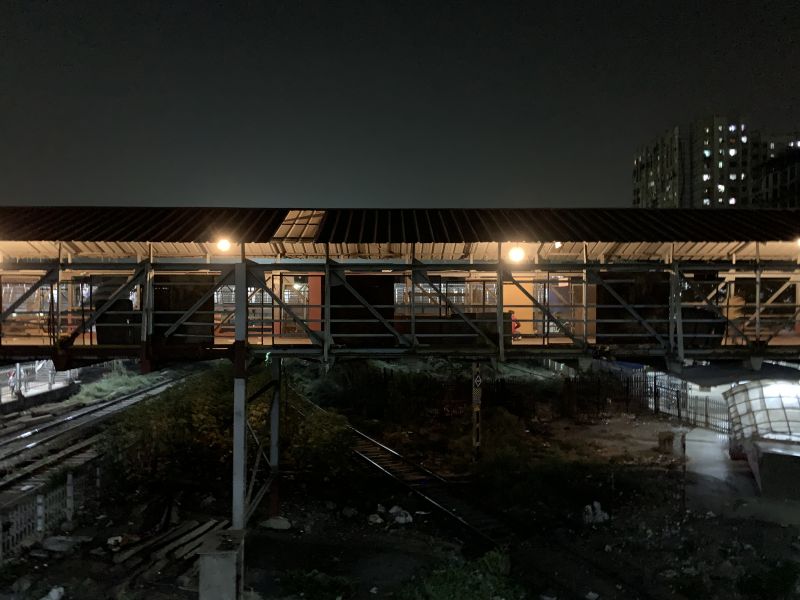
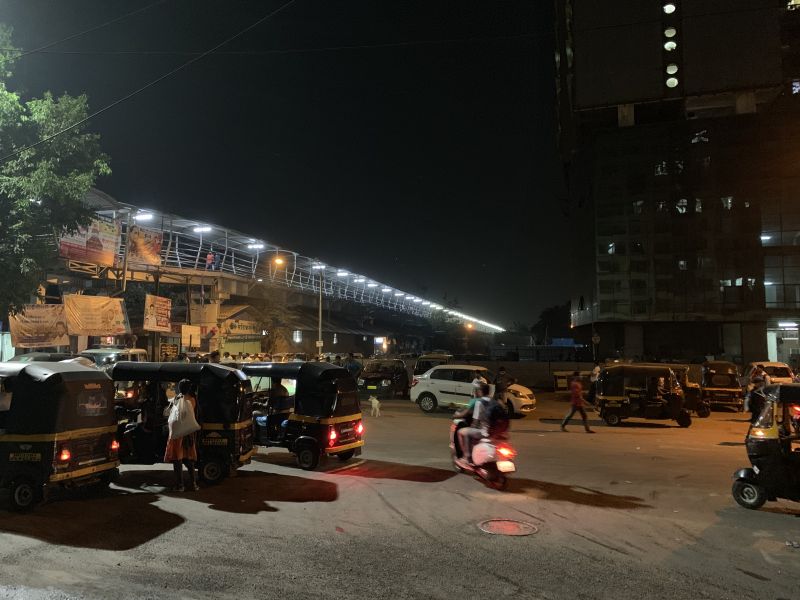
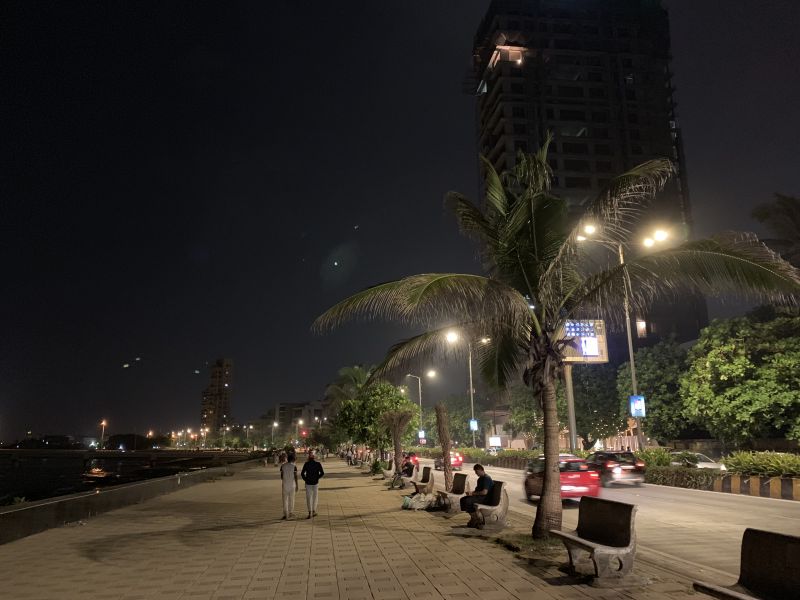

The portrait mode makes for impressive bokeh effects, with Apple improving the edge detection between the subject and the background this time. In fact, the software-based bokeh is a tad better than what we had seen on the iPhone XS. As Apple advertised, the bokeh resembles the blurring from a DSLR camera’s depth-of-field effects and you can adjust it even after you have taken the shot — a la Google Pixel.

Weirdly though, Apple's bokeh system can only identify human faces, which means your pets and objects won’t be getting the bokeh love unless Apple decides to fix this later in future. In short, the Apple Bokeh algorithm only works with human faces and not objects for now. So be prepared to ruin your shots if you are shooting anything else other than human portraits.
The front camera’s results can be at best be termed as extremely impressive. The 7MP sensor captures enough details and just the right balance of colours to make sure selfies keep looking good. However, in low light, a noticeable amount of noise creeps up and you would require some sort of editing before you show off on social media. The TrueDepth system makes for 3D studio lighting effects previously seen on the iPhone X and Apple still has some ground to cover. The edge detection is most of the times a hit-or-miss. Additionally, the XR weirdly only keeps the face and the bust in focus while blurring everything below it. You can dial down the blurring after you have taken the photo and XR makes sure the blurring doesn't feel unnatural by adjusting the shape of the bokeh to resemble a DSLR camera's effects. You also get access to Animojis and Memojis, which now track tongue movements along with facial animations pretty accurately.
 Normal mode
Normal mode
 Portrait Mode
Portrait Mode
 Portrait Mode with 3D lighting effects
Portrait Mode with 3D lighting effects
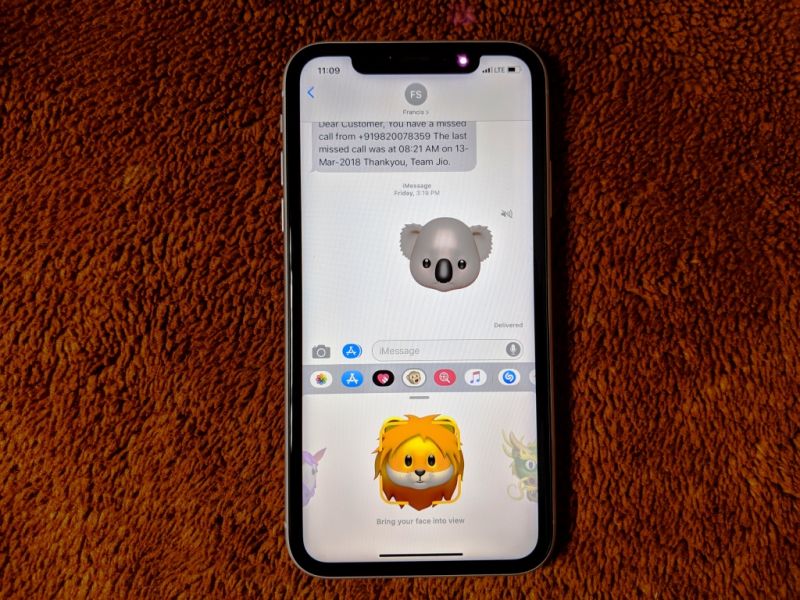
When it comes to video, the XR can pull up its socks and deal with up to 4K videos shot at 60fps. The camera maintains the focus efficiently while the sensor makes sure the image qualities of still images do get applied to the video as well — natural dynamic range and good contrast levels. You can also record slow-motion videos with 1080p@240fps, with audio matching the pace of the footage — only iPhone excel in this regard.
Battery
The Plus-sized iPhones have always been known to offer longer stamina than the regular sized models due to the bigger body accommodating a bigger power reserve. The XR’s 6.1-inch form is closer to the former, which means Apple could fit in a 2942mAh battery. This is smaller by the standards set by Android manufacturers, but more than enough for an iPhone — thanks to ultra-efficient and optimised iOS 12 as well as the chip.
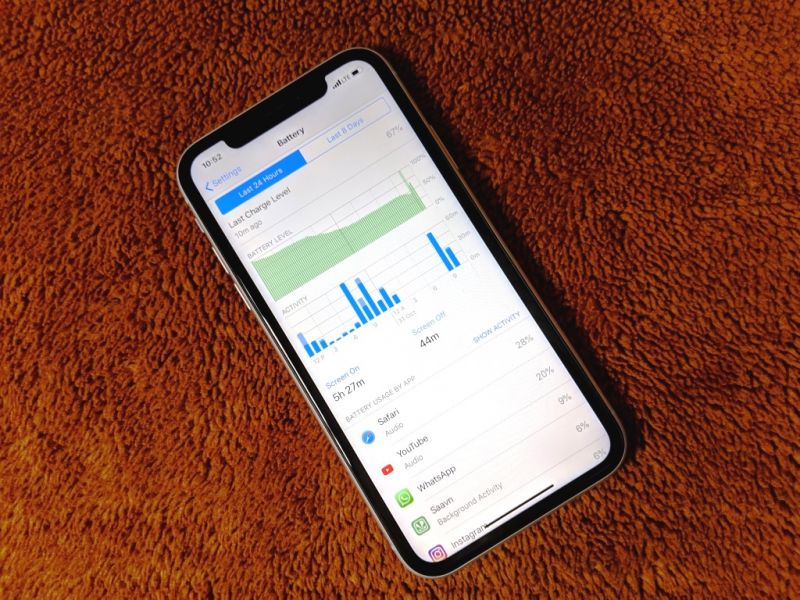
Therefore, with a heavy usage scenario involving incessant texting, streaming audio via wireless headphones, catching up on the latest YouTube videos, browsing social media feeds and short sessions of gaming, the iPhone XR can stay alive through an entire working day, with around 30 per cent of power to spare. On the busiest of days, we managed to get up to 8 hours of screen-on time, which is exceptional for a phone of this class. Filling up the XR is faster with a fast charger or fast wireless charging pad, but the standard 5W adapter takes up to 2.5 hours for topping up the reserve.
Conclusion
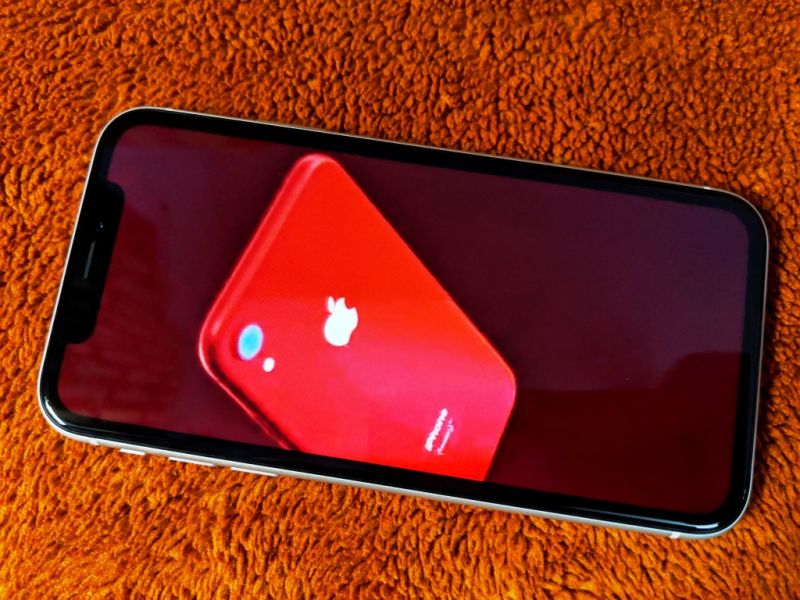
After going through the iPhone XR a little closely, it’s easy to assert that Apple has a winner on its hands that will keep filling the cash registers for the next few years. The iPhone XR is a great flagship-grade smartphone that hits most of the sweet spots consumers look for in an ultra-premium smartphone — premium aesthetics, a superb user experience, a great battery life and an extremely capable camera. The XR does fall short in certain areas where rivals outdo it by miles — the display, despite packing impressive technology, isn’t as good as the AMOLED counterparts, and the lack of a secondary sensor for the rear camera limits a camera that can do wonders otherwise. Additionally, Apple’s computational photography has still some ground to cover, considering Google’s prowess in this regard.
Despite some chinks in its armour, the iPhone XR makes for a superb premium smartphone as an all-rounder. It excels in the majority of areas where one needs a flagship smartphone to perform without compromising on the core fundamentals of a gold-standard user experience. If you aren’t crazy about zooming while taking photos and don’t care about a visually-seducing OLED panel, the iPhone XR makes more sense over the expensive iPhone XS Max. It’s easily one of the most reasonable smartphones Apple has ever built in recent times and you won’t need the fortune to enjoy the latest from Apple.
(source)
